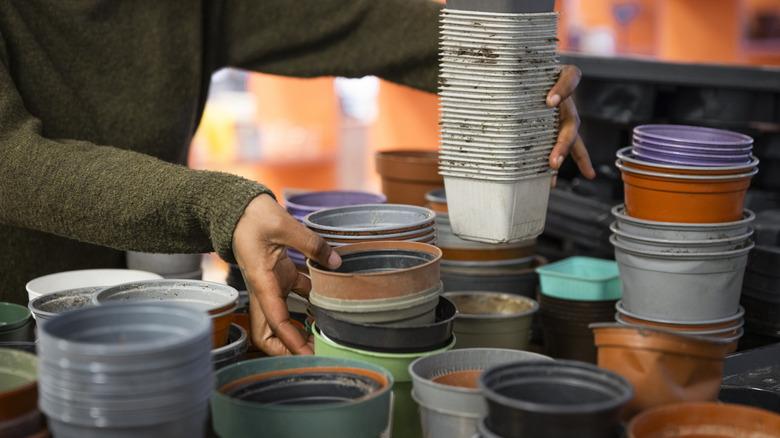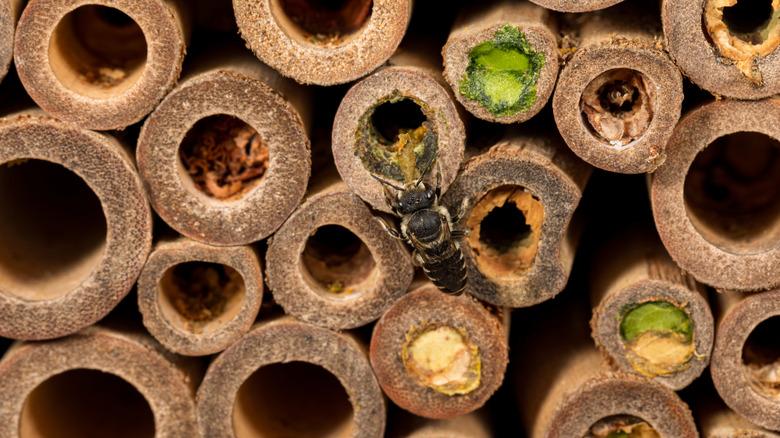How To Repurpose Empty Nursery Pots To Fill Your Garden With Pollinators
We may receive a commission on purchases made from links.
Pollinators play an incredibly important role in the ecosystem and doing what you can to bolster their environment can go a long way. Insecticides, like neonicotinoids, have decimated pollinator populations. Affected pollinators include bees and butterflies, plus other insects that carry pollen. Fewer bees can mean lower food production for fruits as less pollen gets spread.
You can help pollinator populations and reduce waste by using empty nursery pots to create a pollinator garden. You don't need much, but picking plants to help pollinators and materials can create a pollinator sanctuary. Find out how to use an old potted plant container to attract pollinators.
Build a pollinator palace
You can attract pollinators with single-petaled flowers, but some people will choose to buy a bee house, like this one on Amazon. Instead of buying a bee hotel, you can use bamboo, sticks, pinecones, and wood scraps, inside an empty nursery pot for a DIY solution. The holes in the bottom of the planter pot provide ventilation and drainage, but you'll want to add two holes near the rim so you can thread twine through to hang it from a tree.
After you've gathered all the materials, you can pack them tightly into the pot. You can use leaves to fill any remaining holes. After you've filled the nursery pot, you can hang it on a tree. It's best to pick a spot 5 feet or more off the ground and face it toward the east for the sunrise. Your pollinator palace will need some maintenance, like keeping it filled with damp material and cleaning the outside of the pot.
Best materials for a pollinators
Pollinator houses designed for bees contain hollow bamboo stalks because bees like the hollow space to hang out. Other insects enjoy damp materials, like rotting wood or bark. The pinecone and twig bundles will attract ladybugs, which can help boost pollinator populations. Ladybugs are a beneficial insect because they eat aphids. They are also pollinators because they will travel around and gather pollen and nectar. Flowers and herbs also attract ladybugs, and you can grow those separately in old nursery pots.
It's important to use the right kind of wood for a pollinator-friendly habitat. Treated wood can cause issues, while things like cardboard are susceptible to parasites. Plastic straws and glass tubes tend to accumulate too much moisture and mold to prove effective in a pollinator pot. You can monitor your pollinator hotels to see what kind of insects they're attracting and adjust the contents based on what you notice. Creating a pollinator hangout doesn't need a lot of work, but it can make an important impact on the environment.


